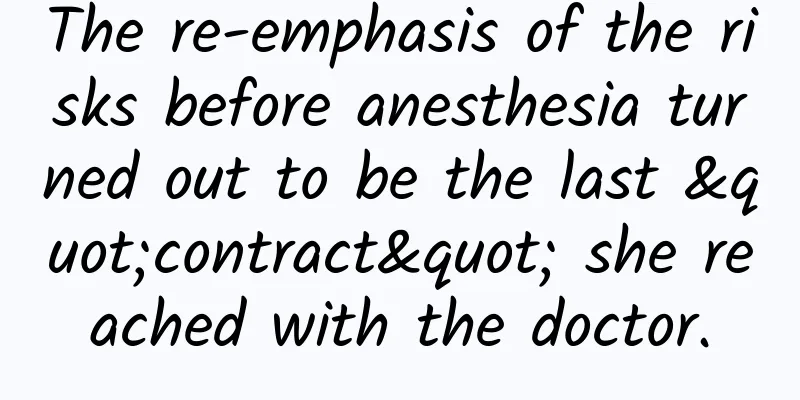Is an empty gestational sac a sperm problem?

|
The gestational sac is generally the state of a pregnant woman in the early stages of pregnancy, and the fetus is also born in the gestational sac. The presence of an empty gestational sac indicates that the embryo has not developed well. This means that the empty gestational sac is not only caused by sperm, but may also be caused by the egg. An empty gestational sac may be caused by the sperm not entering the fertilized egg for a period of time, or the egg is not well developed. Generally speaking, if an empty gestational sac appears, the pregnant woman is more likely to have a miscarriage. The gestational sac is also considered a product of ectopic pregnancy. If the fertilized egg fails to enter the uterus at 7 days due to inflammation, adhesion or other factors, ectopic pregnancy will usually result in heavy bleeding and the fetus will generally not survive. The baby's mother herself was having an intrauterine pregnancy, but due to poor development of the uterus, the gestational sac broke through the weak top of the uterus and entered the abdominal cavity. The villi around the gestational sac sought nutrients everywhere in the abdominal cavity and then supplied them to the fetus through the placenta. Usually, such a fetus will die within two months because it has no protection from the uterine environment and lives in an extremely harsh environment with poor nutrition. Generally speaking, a small gestational sac may be due to emotional tension, etc. This causes the expectant mother's menstruation to be delayed, ovulation to be delayed, and conception to be late, resulting in the gestational sac being smaller than the actual number of days of amenorrhea. For example, the menstruation has not stopped for 50 days, but the examination finds that the gestational sac is only about the size of a 40-day gestational sac. It is normal for the gestational sac to be small. As long as a dynamic examination for one week shows that the levels of chorionic gonadotropin and progesterone are gradually increasing, the gestational sac continues to grow, and the fetal bud and fetal heart gradually appear, it means that the small gestational sac is due to physiological reasons and the pregnancy can continue. If the gestational sac is underdeveloped and smaller than normal due to infection with mycoplasma, chlamydia, rubella virus, etc. during pregnancy, the gestational sac is unhealthy and will lead to miscarriage. It is best to go to a regular hospital for a curettage, find out the cause and treat it symptomatically, and then get pregnant again after one year. Due to poor development of sperm and eggs. Pregnant women may be infected with mycoplasma, chlamydia, rubella virus or come into contact with toxic and harmful substances during pregnancy, which may cause the gestational sac to develop poorly and be smaller than normal. For pregnant women who experience the above situation, the gestational sac will continue to grow as time goes by during pregnancy, but no fetal bud or fetal heartbeat can be seen. In this case, the gestational sac is unhealthy and will eventually lead to miscarriage. |
<<: Can a low gestational sac be preserved?
>>: Where is the single gestational sac in B ultrasound
Recommend
Vulvar itching and tofu dregs
The private parts are the most susceptible part o...
Bleeding after abortion
Bleeding after an abortion is a normal phenomenon...
Can pregnant women eat hawthorn slices?
Everyone should like to eat hawthorn slices. Not ...
What happens if a girl has a hernia?
Speaking of hernia, I believe everyone is familia...
TCM Diagnosis of Delayed Menstruation
Women's medical imbalance has become a major ...
Can you eat as much as you want while losing weight? Low-calorie snacks are delicious and won’t make you fat
"Would you like to eat potato chips?" -...
What causes chest itching?
Itchy breasts make many women worry. In fact, itc...
Can I eat noodles during menstruation?
Many female friends will experience various sympt...
Why do we eat glutinous rice balls during the Spring Festival? The difference between northern Yuanxiao and southern glutinous rice balls
The main raw material of glutinous rice balls is ...
Can I eat walnuts when I have my period?
Women should pay special attention to their physi...
What foods can increase women's sexual desire?
For female friends, if they want to improve their...
How long after the abortion can I go back to work?
More and more women are having abortions. Many pr...
Comdev: Facebook user growth in Asia was the most significant from April 2009 to April 2011
Application developer Comdev recently found that ...
What to do if your ID card expires during the COVID-19 pandemic? How to renew your ID card if it expires during the COVID-19 pandemic?
We all know that the current situation is very se...
How to relieve calf pain
Now we have entered autumn, and the temperature d...









